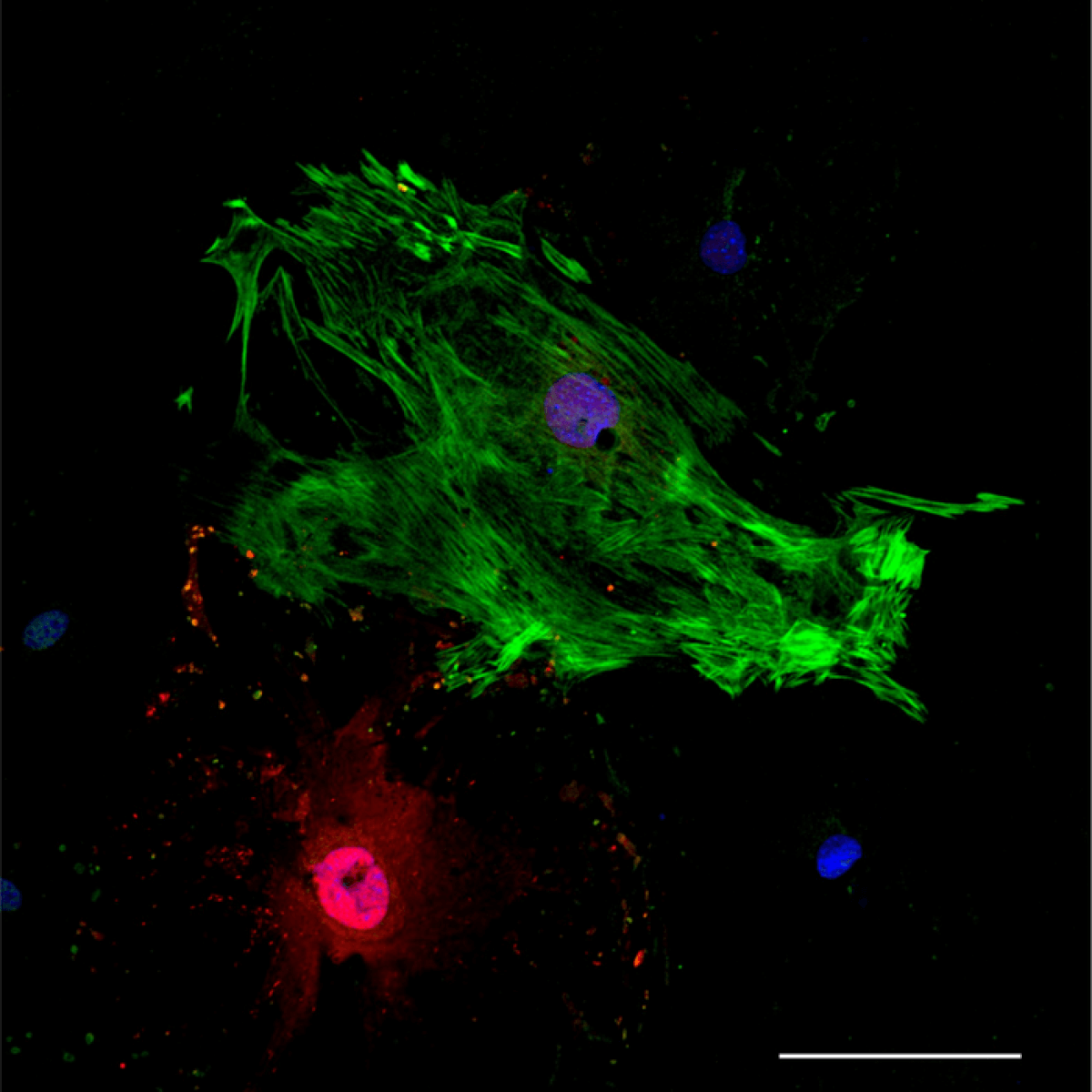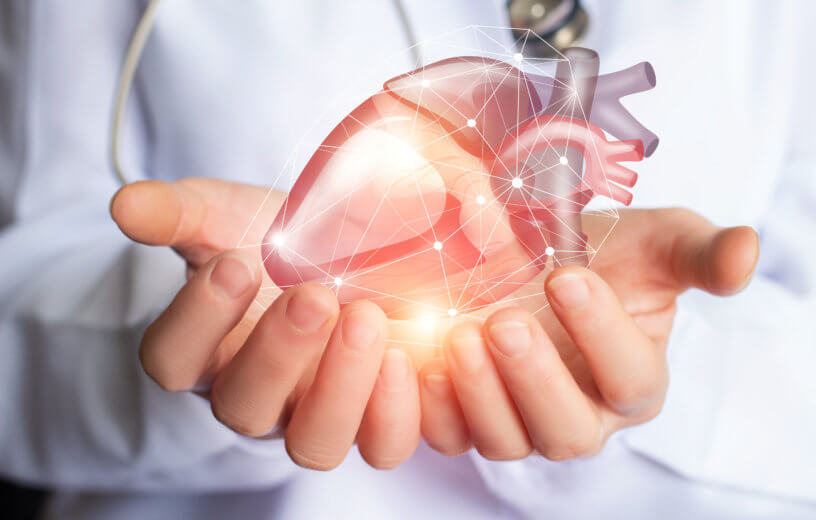DURHAM, N.C. — Researchers at Duke University may one day give countless heart attack patients a second chance for a healthy life. Using rodents, study authors have revealed a potential way to turn back the clock following a heart attack.
The human heart is capable of incredible feats, beating over 100,000 times and pumping over 2,000 gallons of blood throughout the body on a daily basis, but it isn’t quite as skilled when it comes to post heart attack recovery. Cardiovascular disease (which includes having a heart attack) is the leading cause of death on a global scale. The research team used RNAs to instruct cells within an injured heart to eliminate scar tissue and recreate cardiac muscle, ultimately allowing the heart to function like new again.
“Adult human hearts are not very good at repairing themselves,” says Conrad Hodgkinson, an associate professor of medicine and pathology at Duke University School of Medicine, in a media release. “Once they have a heart attack or any type of damage, there’s no capacity to replace the heart muscle that dies. So, what the heart does to stop itself from basically blowing up is it activates fibroblasts to come in and form a scar.”
Here’s why scar tissue in the heart is a really bad thing
Similar to skin scars caused by injury or surgery, scar tissue generated in the heart after a heart attack is generally tough and non-flexible. This scar tissue can then prevent the heart from functioning at its full potential, Prof. Hodgkinson explains.
Researchers set out to identify an efficient way of converting that scar tissue back into functioning cardiac muscle. In other words, they wanted to find a way to essentially reverse the effects of a heart attack. To start, they focused on discovering a new way to transform fibroblasts, a type of cell that contributes to the formation of connective tissue, into heart muscle cells using a process known as cellular reprogramming.
Prof. Hodgkinson’s lab specializes in delivering reprogramming instructions to cells in the form of RNAs. Notably, however, they found adult fibroblasts are not very good at following instructions and are resistant to reprogramming.
“We found that if you take cardiac fibroblasts from juveniles, they reprogram very nicely,” Prof. Hodgkinson adds. “But, if you take cardiac fibroblasts from adults, they don’t, in fact, respond at all. So, we tried to understand whether the aging process was actually interfering with fibroblast reprogramming.”

Scientists convinced cells they were young again!
Study authors eventually discovered that a specific protein oxygen sensor called Epas1 is capable of stopping adult fibroblasts from reprogramming themselves. Researchers were then able to successfully harness the regenerative capacity of young cells by blocking Epas1 in adult fibroblasts.
“When we reversed the fibroblast aging process, essentially making the fibroblasts think they were young again, we converted more fibroblasts into cardiac muscle,” Prof. Hodgkinson says.
Next, the team formulated a cocktail of RNAs and packaged them into exosomes, a natural product produced by most cells. The team’s technology allowed them to deliver the exosomes without surgical interventions. Exosome packages feature unique properties that guide them to cardiac fibroblasts within injured hearts.
“Exosomes are kind of like shopping bags,” the study author explains. “The cell sticks a lot of stuff into a big fat ball to send out and signal to other cells. They are a way cells can talk to each other.”
When the RNA-filled exosomes instructed the fibroblasts to reprogram themselves in a mouse that had just experienced a heart attack, the results were, according to Prof. Hodgkinson, “impressive.”
“We were able to recover almost all of the cardiac function that was lost after a heart attack by reversing the aging of the fibroblasts in the heart,” Prof. Hodgkinson concludes.
In conclusion, study authors believe that cellular reprogramming, in combination with reversing cellular aging, offers limitless future applications, including restoring lost neurons in the brains of dementia patients and eliminating skin scarring in psoriasis patients without the need for surgery.
What exactly is a heart attack?
A heart attack, medically known as a myocardial infarction (MI), occurs when the blood flow to a part of the heart muscle is blocked, usually by a blood clot. This blockage can damage or destroy part of the heart muscle, as it deprives it of oxygen and essential nutrients. The blockage is typically a result of coronary artery disease (CAD), which is the buildup of plaque (a fatty substance called atheroma) within the walls of the arteries that supply blood to the heart.
Several factors can contribute to CAD and increase heart attack risk:
- Age: The risk of heart attack increases with age.
- Gender: Men are generally at a higher risk of heart attack than women.
- Genetics and family history: A family history of heart disease can increase the risk of heart attack.
- Smoking: Tobacco use significantly increases the risk of heart disease and heart attack.
- High blood pressure: Elevated blood pressure can damage the arteries and increase the risk of CAD.
- High cholesterol: High levels of low-density lipoprotein (LDL) cholesterol can lead to plaque buildup in the arteries.
- Diabetes: People with diabetes are at a higher risk of developing heart disease.
- Obesity: Excess body weight can contribute to high blood pressure, high cholesterol, and diabetes, which in turn increases the risk of heart attack.
- Physical inactivity: A sedentary lifestyle can increase the risk of CAD.
- Stress: Chronic stress can contribute to high blood pressure and other factors that increase the risk of heart attack.
- Drinking alcohol: Excessive alcohol intake can increase blood pressure and contribute to the development of heart disease.
Symptoms of a heart attack can vary among individuals but often include chest pain or discomfort, shortness of breath, cold sweats, lightheadedness, nausea, and pain radiating to the arms, neck, jaw, back, or stomach. Immediate medical attention is crucial for anyone experiencing these symptoms, as prompt treatment can greatly improve the chances of survival and minimize damage to the heart muscle.
The study is published in the Journal of Biological Chemistry.

